Saturday, October 16, 2021
Fifty years ago..................................
The hopeful birth.........................
..........................of a sub-division: Episode 13
Tapping the water main:
To develop 41 acres into 113 residential building lots, access to municipal water is a necessity. In our case, the nearest city water main lays on the opposite side of the Horns Hill Road from our sub-division. Needing to maintain traffic on a fairly busy road, having an "open cut" was just not possible. The solution was to bore underneath the road to access the 16" water main. A 16" water line is fairly sizable with significant water pressure. One wants to be careful. The main line is located just a foot or two outside of the limits of the Horns Hill pavement, so we had no choice but to excavate one lane of pavement. Took most of a day, but mission accomplished.
 |
| Road cut, water main exposed |
 |
| A fairly skilled hoe operator |
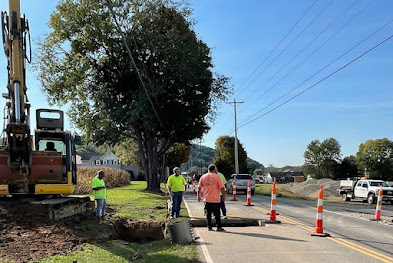 |
| Maintaining Horns Hill traffic |
 |
| Cleaning the water main |
 |
| Beginning the bore. The black pipe behind the machine is the water line that will go under Horns Hill Road |
 |
| Advancing the bore confidently |
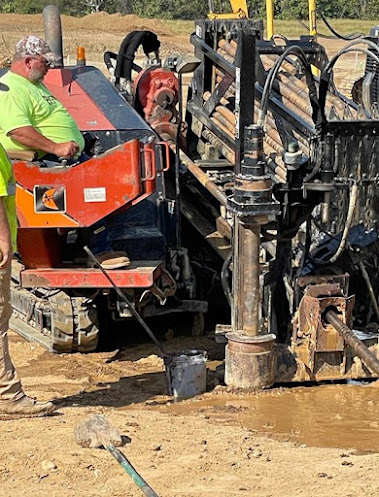 |
| A boring machine |
 |
| top half of the tapping sleeve |
Friday, October 15, 2021
A walk in the park.................................
My Sweetie and I took a few days off to amble around in the Hocking Hills. If we were geologists we could explain more about the sandstone formations. As it is, we believe one can enjoy nature without fully understanding it. For those interested in taking a deeper dive, visit here or here for starters.
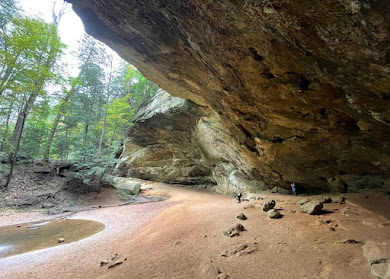 |
| Old Man's Cave |
 |
| Rose Lake man-made with no vehicular access |
After a long day of communing with nature, the only logical thing to do was retire to the Hungry Buffalo to drink a beer and throw axes. As the sign says, "What could possibly go wrong?"
The hopeful birth................................
.....................of a sub-division: Episode 12
Installing water lines.
For this phase of the sub-division, the requirements for water service include about 2,000 lineal feet of 8" ductile iron pipe for the mains, an equivalent amount of 3/4" copper for individual lot service lines, as well as six fire hydrants. Water lines go in last. They are generally shallower than sanitary sewer and storm water lines. Since the water is under pressure, gravity is not required to make it work.
 |
| Laying out the pipe |
 |
| Your basic fire hydrant installation |
 |
| Laying the water mains |
 |
| Bedding the mains |
 |
| Preparing to add the tap for an individual lot service line |
 |
| More of same |
 |
| The completed tap for the 3/4" copper service line |
 |
| Trenching for the main |
 |
| Water lines go in last, as their elevation is more flexible |
 |
| This main runs below a sanitary sewer lateral |
 |
| Connecting two water mains |
 |
| Installing the 3/4" copper service lines |
 |
| Connection of a service line to the water main |
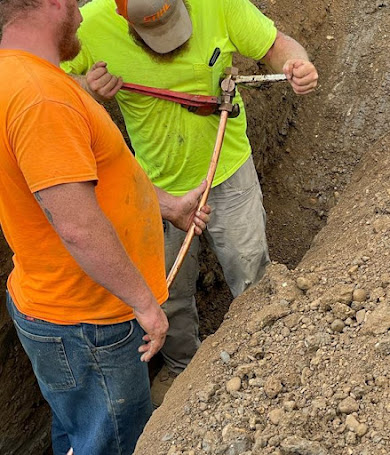 |
| Preparing the shut off valve for the service line |
 |
| Setting the shut off valve |
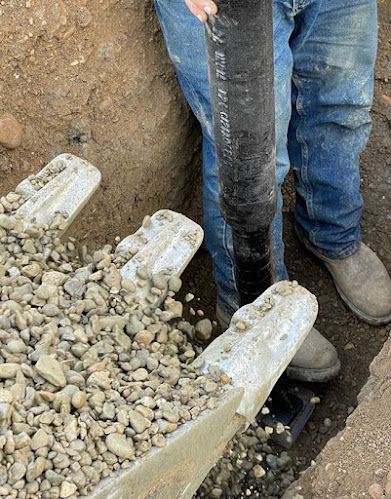 |
| Bedding the shut off valve |
Thursday, October 14, 2021
"I hope I never recover from this....................."
"I am so filled with emotion about what just happened. It's extraordinary. I hope I never recover from this. I hope that I can maintain what I feel now. I don't want to lose it," he said.
"It's so much larger than me and life. It hasn't got anything to do with the little green men ... It has to do with the enormity and the quickness and the suddenness of life and death."
Wednesday, October 13, 2021
The hopeful birth............................
.............................of a sub-division: Episode 11
Storm water management.
One of the principles of development is that storm water cannot leave your property any faster after the development is completed than it did before the development occurred. Call it storm water management. In our case, we collect the water from the development and direct it to a storm water basin, also potentially known as a pond. The word potentially is included primarily because it was our hope that the basin would not hold water permanently, that the water would percolate through the sand and gravel soil and disappear after a brief spell. Early returns indicate it may become a pond. Also in our case, the nice folks at the City Engineer's office believe that our site is the recipient of a fair amount of water coming off the hillsides on the opposite side of Horns Hill Road. Even though this runoff comes not from our land, we still have to account for it. So we did.
There is a logical sequence to the development process. You start with the deepest pipes, the sanitary sewer, then move to the next deepest pipes, the storm sewer. Both of these systems rely on gravity. Elevations matter.
 |
| The storm water basin |
 |
| Laying some big pipe to catch the storm water coming from the hillside across Horns Hill Road |
 |
| Bedding said pipe with gravel |
 |
| Connecting the storm pipe to a storm structure (manhole) |
 |
| Ditto |
 |
| Laying some deeper storm pipe. Box required for safety |
 |
| ditto |
 |
| Your basic storm structure. Inlets and outlet |
 |
| Street storm water inlet |
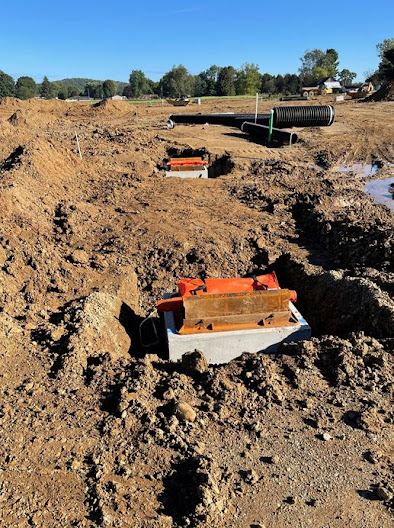 |
| Two street storm inlets waiting patiently for the street |
 |
| Main outlet for storm water coming off the hillside on the other side of Horns Hill Road to flow into our basin |
 |
| Different view of the same |
 |
| The storm basin will allow water to flow towards the North Fork of the Licking River. This is the outlet at the lower edge of the basin |
 |
| This pipe offers the only outlet for storm water leaving our development. |























